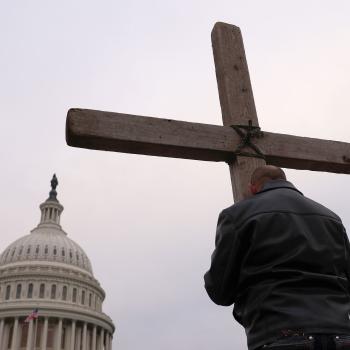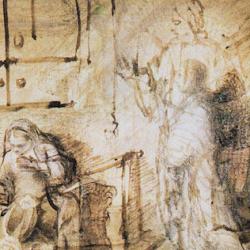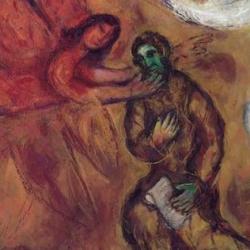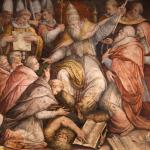Yahweh brings a devastating judgment on His own people and on Edom, slaughtering and destroying them. He empties the land of Edom, and fills their cities with wild animals (Isaiah 34-35). What has this got to do with us? Everything.
What Isaiah depicts is a figure of the gospel story. Jesus is the true Israelite, the genuine Heavenly Man, the Bright Morning Star, who comes to offer Himself as a living sacrifice, to place Himself under the sword and to throw Himself into the fire. In the cross is the judgment of this world.
And once He has offered Himself in sacrifice, and once His blood has been spilled on the land and the land made fat with the slaughter of Jesus, then the land is cleared and renewed. It’s through His sacrifice as the true Israel, as the heavenly man, that the world is refreshed, the wilderness blossoms, eyes and ears are opened, the lame walk and the dumb speak. Through His sacrifice, water begins to bubble up in the deserted, and dry places blossom like a rose. Through His sacrifice, He creates a highway of return, and clears the land of beasts that might prey on the exiles who are coming with joy to Zion.
What Isaiah describes is a figure of Christian experience. Jesus didn’t die on the cross so that we could escape death. He was not crucified so we wouldn’t have to be crucified. He was crucified so that we could be crucified with Him, so that we could take up our cross. God brings His sword into our lives. He comes to divide our families; He comes with His sword to slaughter and kill us. He comes with His fire to consume us. He places us under the knife and makes us pass through the fire, so that there is nothing left but desert.
But this sacrificial procedure is a kind of radical surgery that brings healing. As we pass through the knife and fire, the Lord brings new growth, makes the desert blossom, makes the dry land into a pool of water. By the sword and the fire, He makes a highway of holiness, a highway to Zion, that we can travel with singing.
What is a figure of Jesus in His sacrifice is also a figure of Christian mission. What Isaiah depicts here is the movement of Christian mission. Christian mission is a grand sacrificial procedure. Evangelism means summoning the nations to gather before God to be sacrificed.
That is the picture that Paul presents in Romans 15:16. He is concluding his letter and says, “I have written very boldly to you on some points, so as to remind you again, because of the grace that was given me from God, to be a minister of Christ Jesus to the Gentiles, ministering as a priest the gospel of God, that my offering of the Gentiles might become acceptable, sanctified by the Holy Spirit.” Paul envisions himself as a priest at an altar. The sacrificial victims are Gentiles as well as Jews, and He is busy cutting them in pieces and throwing them on the fire so that they ascend to God as a pleasing aroma.
And this is also the image we have of Jesus’ own mission at the end of Revelation, in our New Testament reading. Jesus goes out at the head of an army. His robes are dipped in blood, the blood of His own sacrifice, the blood of His enemies from Edom. Behind Him ride a host of linen-clad priest-warriors who are going to smite the nations with a sword. They are going to slay kings and commanders and mighty men and horses, and these are going to be eaten by the birds and scavengers of the field.
We are that army. We follow Jesus, and take up his armor and weapons. The chief weapon of His warfare is the sword that comes from his mouth. This is the sword of the Spirit, the sword of the Lord, by which he cuts down the wicked, divides between joints and marrow and soul and spirit, by which he slays the world so that it can come back to life in a new and more fruitful form. We follow Jesus our Commander to make the world a great altar, where the flesh is killed and men and women are transfigured into smoke; we follow Jesus our Commander, who transforms the slaughterhouse of this world into a table.













